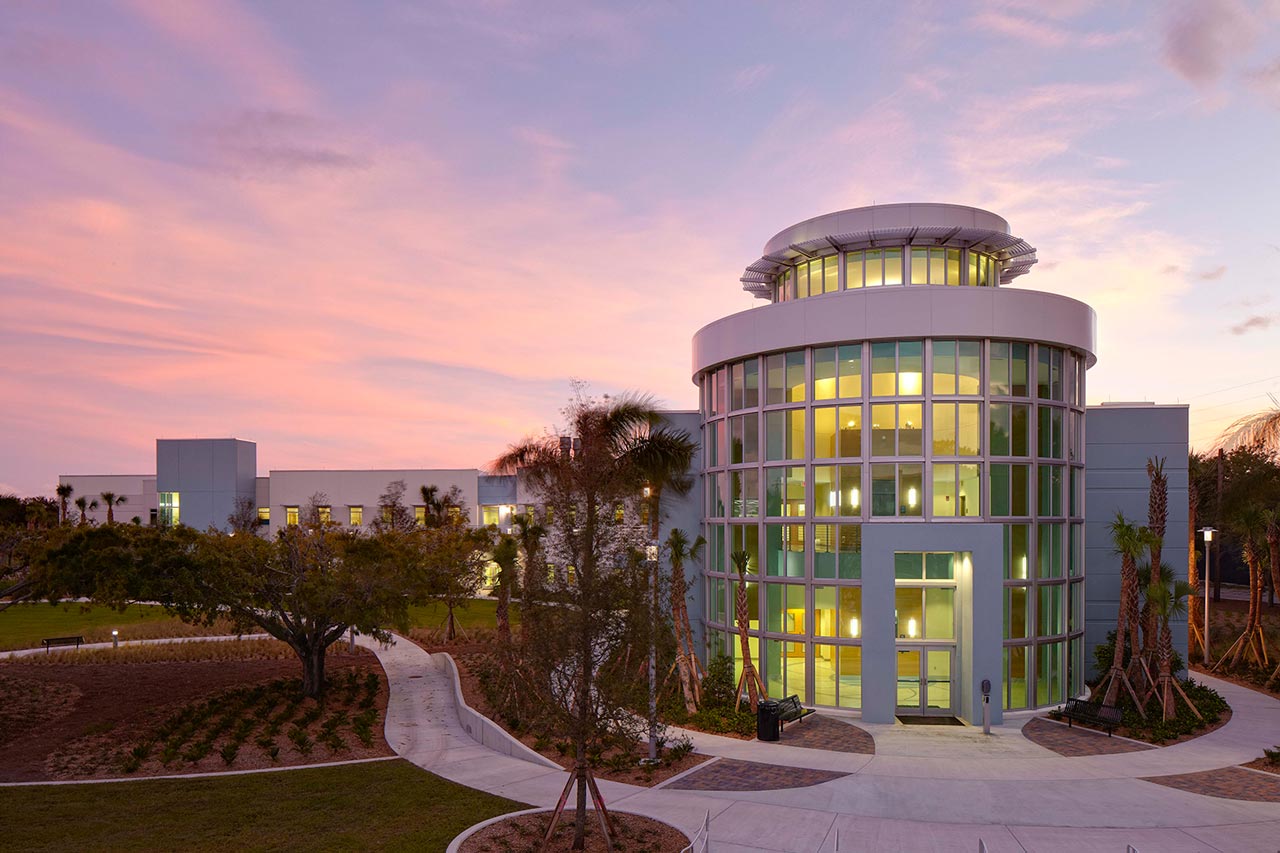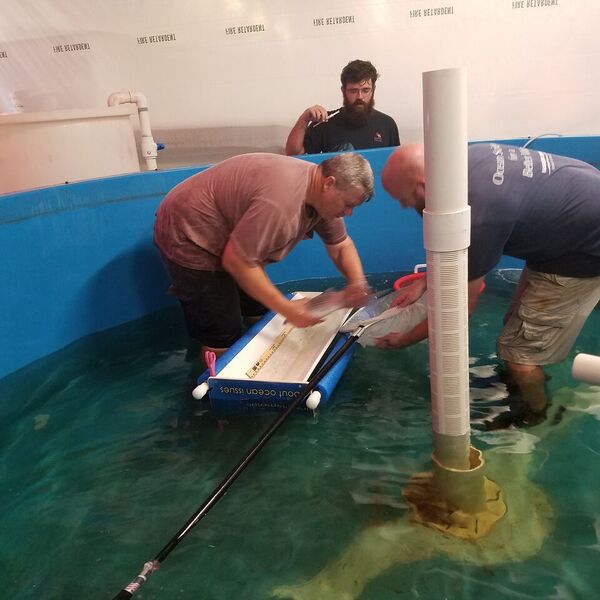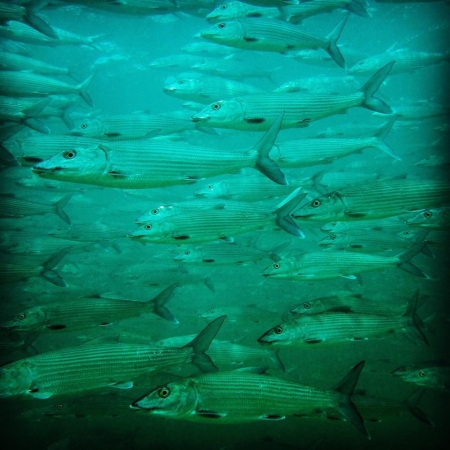Bonefish Conservation and Restoration Program
Jon Shenker, Ph.D., Department of Biological Sciences, Florida Institute of Technology
Paul Wills, Ph.D., Harbor Branch Oceanographic Institution, Florida Atlantic University
Though the Florida Keys are still a world-class fishing destination, the decline of the region’s bonefish population over the past decades is a tremendous concern to anglers, fishing guides, scientists and resource managers, and a threat to the Keys economy.  Bonefish & Tarpon Trust is leading the way to answering the vital questions of what might be causing the problem and how the population can be restored to healthy levels.
Bonefish & Tarpon Trust is leading the way to answering the vital questions of what might be causing the problem and how the population can be restored to healthy levels.
An important part of BTT’s efforts are focused on evaluating potential sources of the problem by funding multiple studies, including the sources of larval bonefish that may be coming from locations in the Caribbean; changes in prey abundance in the Keys; chronic long-term responses to toxicity and environmental stressors in the changing Keys environment; changes to habitats.
These critical studies will help identify the causes of bonefish population decline in the Florida Keys. As the causes are discovered and plans formulated to fix them, helping the bonefish population recover will be equally important. In recent years, our understanding of bonefish reproduction in wild populations, primarily through field research in the Bahamas, has grown significantly. We are using that knowledge to drive a major new project to spawn bonefish in aquaculture systems, rear their larvae, and produce juvenile bonefish. This five-year program, funded by a partnership between BTT and the National Fish and Wildlife Foundation (NFWF), seeks ultimately to provide partner organizations with a new restoration tool in the form of stock enhancement—a tool that will be available in the event that the Florida Keys population needs a boost to sustainably return to its once abundant levels. The project is being conducted at the Aquaculture Research Park at Florida Atlantic University’s Harbor Branch Oceanographic Institution (HBOI) in Fort Pierce, Florida. HBOI has one of the preeminent aquaculture programs in the southeast US, with facilities, experienced research scientists and technical support all ideally suited to this ambitious undertaking.
The goals of the program include learning what controls production and survival of larval and juvenile bonefish in culture systems and in natural habitats. Juveniles produced in culture can be used to identify optimal juvenile habitat in the Keys, and to help target habitat restoration efforts in the natural ecosystem. While we don’t anticipate releasing large numbers of juveniles into the wild, having the ability to produce those juveniles is a very handy tool to have if needed in the future.
Pioneering studies by Dr. Andy Danylchuk (University of Massachusetts) and Dr. Aaron Adams have given us a great start on understanding when and how bonefish spawn. Their efforts have led to discovery of half a dozen sites in the Bahamas where bonefish gather in huge schools just prior to spawning. Building on their initial studies, we’ve caught fish from those schools, implanted them with sonic tags, released them back into the schools, and followed them offshore on their nighttime spawning run. Other fish have been established in temporary tanks on land, where we’ve attempted to get them to spawn so we can start to learn how to incubate their eggs and grow their larvae.  The research team is close to obtaining viable embryos, which will be a focus of upcoming trips to bonefish spawning sites in the Bahamas.
The research team is close to obtaining viable embryos, which will be a focus of upcoming trips to bonefish spawning sites in the Bahamas.
The program at HBOI started in March 2016 with the reconfiguration of existing tank facilities to hold adult bonefish for broodstock. Procedures were developed to capture fish and transport them to HBOI, to maintain them in captivity, and to induce them to spawn in our culture tanks. With the assistance of Captain Bob Branham, we caught two fish from Biscayne Bay in late spring. The fish readily handled the transport to the lab, and quickly began feeding on shrimp in a large aquaculture tanks. That success led to a larger broodstock collection effort in July. BTT’s Brooke Black coordinated a five-day effort in the Middle and Lower Keys that enlisted the efforts of Captains Richard Black, David Denkert, Bo Sellers and angler/BTT friend Rob to catch 20 fish, hold them in tanks at the Keys Marine Lab on Long Key before bringing them to HBOI, where they readily adapted to captivity.
With spawning season upon us (bonefish spawn between late October and April), we examined the reproductive condition of the fish at HBOI in early November 2016 by extracting gonad samples from the bonefish. Several of them were indeed producing eggs. Our team will monitor their development carefully in upcoming months, and perhaps use injections of reproductive hormones to help them get ready to spawn. While waiting for spawning, new larval rearing protocols will be developed, so we’ll be ready to tackle the next major challenge.
2017 promises to be an exciting year in our growing knowledge of bonefish reproduction and our capacity to spawn and rear fish in a laboratory setting.
Photo legend:
- Florida Atlantic University’s Harbor Branch Oceanographic Institution (HBOI) in Fort Pierce, Florida
-
Paul Wills (left), Chris Robinson, and Bob Halstead (former BTT staff, and now a grad student at HBOI) checking on the reproductive condition of bonefish in a culture tank at Harbor Branch.




